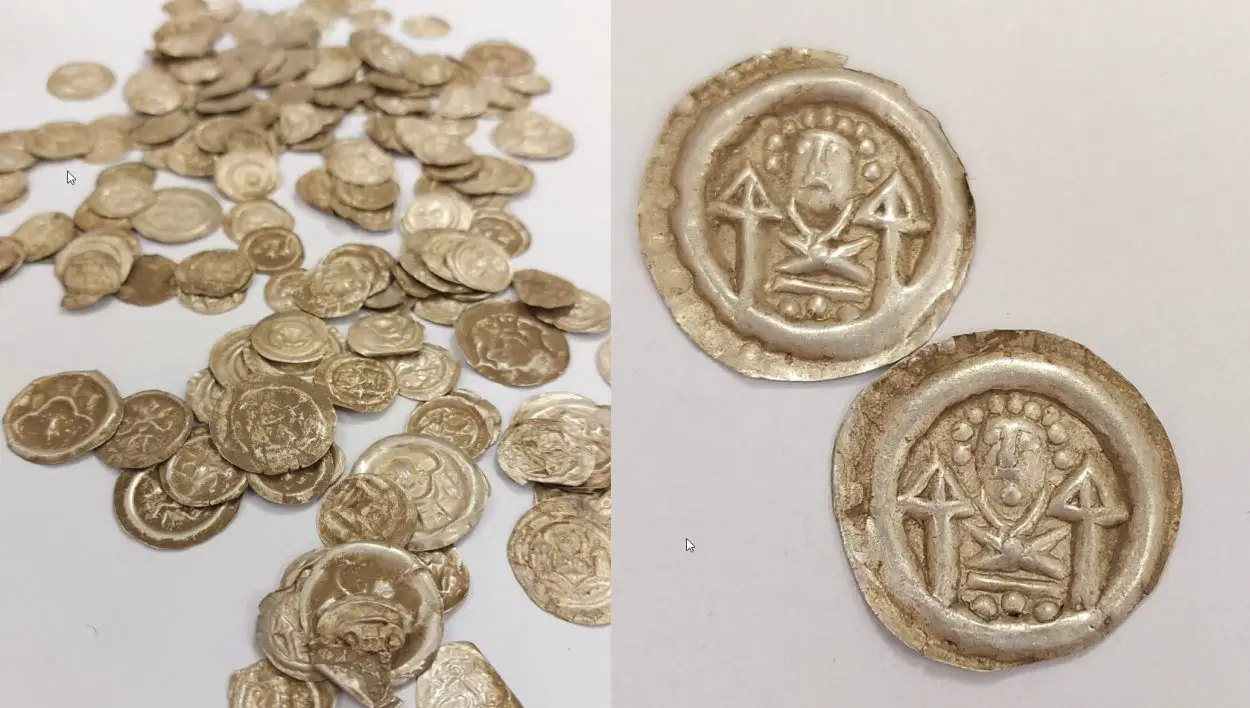A hoard of medieval bracteate coins has been discovered near Wałbrzych in Lower Silesia, Poland.
The coins were unearthed by a dog walker, who notified authorities at the Wałbrzych Branch of the Provincial Office for Monument Protection in Wrocław.
Archaeologists investigating the discovery have revealed that the coins were stored in a clay pot and date from around the first half of the 13th century AD. A closer study shows that the coins depict zoomorphic and human-like figures, in addition to elements of architecture and patterns.
The coins are one sided and made from thin sheets of metal due to the limited availability of silver or gold. They originate from the mint workshops of Brandenburg, Saxony and Silesia, although their use was relatively short as the coins were usually called back regularly (about once or twice a year) to be exchanged for new coins.
In receiving three new coins for four old coins, the withheld 4th coin was called strike money and was often the only tax revenue of the coin mint-master. This system worked like a demurrage, with people often hoarding their coins because they lost their value.
The coins have been described as one of the most significant discoveries in the region, as very few coins of this type survive from the period as they were melted down on an ongoing basis.
They have been designated the rank of an archaeological monument and as such, are now owned by the State Treasury for preservation.
Header Image Credit : Lower Silesian Provincial Conservator of Monuments





